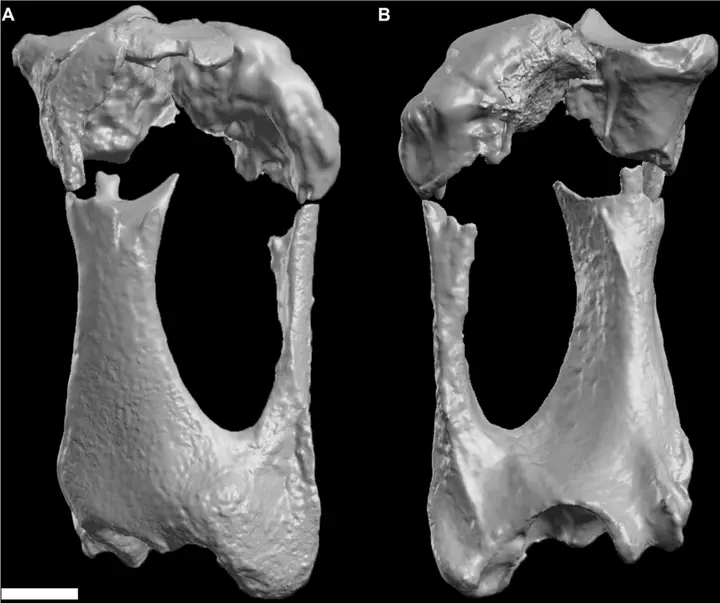Presence of the ground sloth Valgipes bucklandi (Xenarthra, Folivora, Scelidotheriinae) in southern Uruguay during the Late Pleistocene: Ecological and biogeographical implications

Abstract
Within the subfamily Scelidotheriinae, Valgipes bucklandi represents one of the least known taxa due to its scarce records and material found so far. This Pleistocene ground sloth had been registered only in Brazil, within the Brazilian Intertropical Region (BIR) in the states of Bahia, Minas Gerais, Piauí, Rio Grande do Norte and, more recently, outside the BIR, in Mato Grosso do Sul. A particular feature of this sloth is the proximal and distal fusion of the tibia and fibula in adults. Here, we report a tibia-fibula assigned to V. bucklandi found in Arroyo del Vizcaíno (Canelones, Uruguay), a fossiliferous site that harbors a large amount of megamammal remains at an approximate age of 30 ka (29696–32009 cal yr B.P.). We performed stable isotopes analyses and ecological niche models (ENM) to study V. bucklandi distribution and climatic and dietary preferences, as well as to better understand its presence ~2000 km southward of its previous recorded occurrences. δ13C values were consistent with those of the BIR, indicating a similar preference for C3 plants, while the results of δ18O values could be related to colder and more humid environments, clearly different from those obtained from BIR specimens. Furthermore, the ENM results also showed colder and more humid environments for the AdV record, with the occurrence being in the margins of the predicted potential distribution of the taxa. This discovery expands the distribution of this taxa to southern colder climates, indicating a greater climatic tolerance. Moreover, our results support the existence of mixed faunas composed of Southern and Northern taxa coexisting in Southern Uruguay at the onset of the Last Glacial Maximum, and provide evidence of the existence of an open mosaic habitat with patches of mixed vegetation in the region.